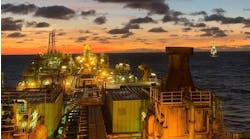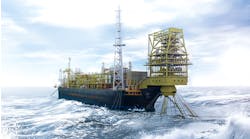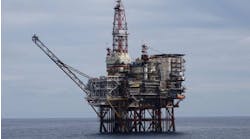Matthew R. Simmons
President, Simmons & Company International
To everyone's astonishment, 1995 saw the disappearance of the offshore "rig bubble." Last January, there was no reason for anyone to think that 1995 would be any different from years past. Operators expected business-as-usual, selecting a specific rig by getting bids from a number of other competitive rigs to ensure they got the best possible price for the one they preferred.
Slowly but steadily, though, one rig class after another saw its excess supply of rigs abruptly disappear. By the end of the year, virtually all drillships, semisubmersibles, and large (300 ft or deeper) jackups were back at work. As this idle capacity evaporated, day rates rapidly rose. Moreover, in recent months, many rigs have obtained two or three-year contracts, as operators tried to ensure rigs were available for their programs. This dramatic change in the dynamics of offshore drilling, after so many years of sloppy prices and poor utilization, will likely shape the future of offshore development for a long time to come.
Two tight markets
Is the tightness sustainable or will the drilling boom quickly vanish and the industry return to low day rates and surplus capacity? There is a good chance that we have finally seen the vast rig bubble, which at its 1987 peak totaled almost 350 idle mobile rigs, disappear permanently. The rig surplus has steadily eroded over the past eight years through attrition in the rig fleet and rising rig demand.
The catalyst for the final tightening was the simultaneous emergence of healthy drilling markets in both the Gulf of Mexico and the North Sea. Over the entire previous decade, high levels of drilling in both of these two large offshore markets have never coincided. To the contrary, when one was active, the other was unusually depressed.
Can both areas remain healthy? Current North Sea activity is being driven by the addition of smaller and fast depleting fields to replace the depleting production base of the much larger fields brought onstream in the 1970's and 1980's. To prevent a rapid decline in North Sea production, the current level of drilling needs, at the least, to be maintained, if not increased.
Gulf of Mexico drilling activity is being driven by three different factors, and all are competing for the dwindling pool of high quality rigs: Just-in-time conventional gas drilling, subsalt exploration drilling, and the rapidly expanding deepwater developments of the Gulf of Mexico.
The need to keep drilling levels stable, or increasing in both areas, combined with the need for more offshore drilling off West Africa, Latin America and Southeast Asia, means the current rig tightness could be around for a surprisingly long time.
Impact of higher costs
Could some drilling projects become casualties from either high day rates or lack of rigs? It will take time to assess the impact of higher drilling costs. In the North Sea, however, rising rig rates have increased the cost of a new exploration and appraisal well drilled by a semisubmersible today by almost 25% in less than one year. Given the small size of many new North Sea fields, some must already be becoming economic casualties of higher drilling costs.
Fields to be developed with floating production systems, many of which were designed around cheap second generation semisubmersibles, could also see some casualties. The value of second generation semisubmersibles has just soared, and for every added rig taken out of commission for an FPS conversion, the semisubmersible market tightens further.
Rising costs must also impact the delicate balance between soaring demand for hydrocarbons and a shrinking amount of excess supply. Between 1990 and 1995, the world outside the FSU needed another 13 million BOE each day to satisfy rising demand. Offshore supplies accounted for over 9 million BOE per day of the supply and this was achieved by putting more offshore rigs to work.
If, as seems likely, worldwide hydrocarbon demand continues to grow at the recent rate, there has to be some doubt as to whether offshore production can continue to supply its historic disproportionate amount if no more rigs can be brought into service.
Next rig generation
Inevitably, the question arises as to when the next round of new rig additions will occur and what type of day rate and term of contract is needed to justify an expansion of the fleet. Further, what type of new rig will be built and what will it cost? Will a fifth generation semisubmersible or jackup be a much larger unit or will it be some new low-cost rig design not even contemplated today?
These issues will be debated endlessly over the coming months and years. The only thing that is clear today is that the future of offshore drilling will be completely different from the long era of excess supply that is now ending.
This page reflects viewpoints on the political, economic, cultural, technological, and environmental issues that will shape the future of our industry. Offshore Magazine invites you to share your thoughts. Send your manuscript toBeyond the Horizon, Offshore Magazine, Box 1941, Houston, TX 77251 USA. Manuscripts will not be returned.
Copyright 1996 Offshore. All Rights Reserved.


